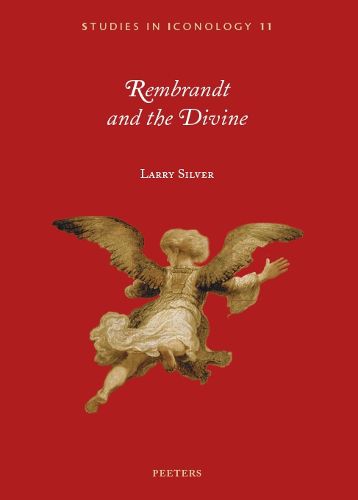Readings Newsletter
Become a Readings Member to make your shopping experience even easier.
Sign in or sign up for free!
You’re not far away from qualifying for FREE standard shipping within Australia
You’ve qualified for FREE standard shipping within Australia
The cart is loading…






Because Dutch seventeenth-century painting is primarily known for its
naturalism, representing the divine posed particular problems for
painters of religious stories, especially Rembrandt. Indeed, if seeing
is believing, then the visible presence of angels - and finally the
presence on earth of Christ as the divine Incarnation in the flesh -
could confirm to the senses the presence of divine providence in the
world. Angels also evoke a sense of wonder in all who behold them, those
who are blessed to receive their visitation from a watchful, if
invisible God.
Like John Calvin, Rembrandt carefully read his Bible. Thus his angels,
represented traditionally as winged creatures, actively participate in
important religious events, particularly in Old Testament scenes,
beginning with Abraham. In later biblical history, however, angelic
appearances diminish; both God - and angels as His agents - intervene
less directly to interact with humankind. In Rembrandt’s art, angels are
active and visible, but sometimes they reveal their identity just as
they disappear, flying away. Other Rembrandt religious images convey
divine presence only through light rays from above. With the New
Testament advent of Christ, however, angelic attendants chiefly magnify
the divine nature of Jesus in the world. Following the theology of John
Calvin that dominated Dutch spirituality, Rembrandt allows his pious
viewers to behold those very angels or, like Mary Magdalene and the
apostles, even to view the divine nature of the risen Christ.
$9.00 standard shipping within Australia
FREE standard shipping within Australia for orders over $100.00
Express & International shipping calculated at checkout
Because Dutch seventeenth-century painting is primarily known for its
naturalism, representing the divine posed particular problems for
painters of religious stories, especially Rembrandt. Indeed, if seeing
is believing, then the visible presence of angels - and finally the
presence on earth of Christ as the divine Incarnation in the flesh -
could confirm to the senses the presence of divine providence in the
world. Angels also evoke a sense of wonder in all who behold them, those
who are blessed to receive their visitation from a watchful, if
invisible God.
Like John Calvin, Rembrandt carefully read his Bible. Thus his angels,
represented traditionally as winged creatures, actively participate in
important religious events, particularly in Old Testament scenes,
beginning with Abraham. In later biblical history, however, angelic
appearances diminish; both God - and angels as His agents - intervene
less directly to interact with humankind. In Rembrandt’s art, angels are
active and visible, but sometimes they reveal their identity just as
they disappear, flying away. Other Rembrandt religious images convey
divine presence only through light rays from above. With the New
Testament advent of Christ, however, angelic attendants chiefly magnify
the divine nature of Jesus in the world. Following the theology of John
Calvin that dominated Dutch spirituality, Rembrandt allows his pious
viewers to behold those very angels or, like Mary Magdalene and the
apostles, even to view the divine nature of the risen Christ.